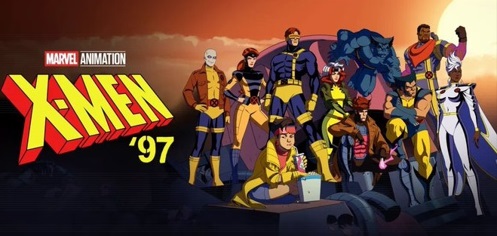Review: My Entire High School Sinking into the Sea
Did high school ever make you feel like you were drowning? You’ve got nothing on Dash and his friends.
Dash (Jason Schwartzmann, heavily channeling Max Fischer from Rushmore) is a student and amateur reporter at Tides High, where he channels his pretentiousness into dreams of becoming a writer alongside his best friend Assaf (Reggie Watts). The friendship between this core duo encapsulates one of My Entire High School Sinking into the Sea’s greatest strengths: all the students actually feel like teenagers.
OVERVIEW (SPOILERS BELOW)
In his feature-length debut, writer/director Dash Shaw exhibits an uncanny skill for capturing feelings of naivete, obliviousness and melodrama that too many high school movies ignore. For instance, the film’s main arc borrows heavily from The Poseidon Adventure, yet prior to this, the central conflict is Dash feeling left out in the wake of a blossoming relationship between Assaf and Verti (Maya Rudolph). The rapid and hilarious escalation of emotions from there is, simply put, childish. Fans of the Scott Pilgrim series will recognize the stylised yet authentic tone of Shaw’s dialogue throughout the film, which makes it even easier to be drawn into its distinct world.
Meanwhile, there are spectacular and unique uses of colour that command your attention and are easily among the best I’ve ever seen in a film. One scene in an elevator shaft is shrouded almost completely in darkness, except for the two doorways where characters are standing, and magnifies the sense of difficulty and danger of the climb up the shaft that awaits. Coupled with confident and clever deployment of shadowing and screentone courtesy of Shaw’s comic-illustrating roots, the environments are simply stunning. However, at times the film seems to recognize that its visuals can be overpowering, and gives way to them in surreal, impressionistic sequences without dialogue. I can see how this could be an effective technique to convey mood in theory, but the beauty of these sequences was somewhat reduced for me as they all felt overlong. Another impressive visual trick in Shaw’s arsenal is the Wes Anderson-esque cross-section shot, which is employed sparingly and at logical moments, such as quickly providing a reference of Tides High’s layout, avoiding the need to waste time on further exposition.
The character models fall somewhere between the original Tintin comics and Raymond Briggs’ When the Wind Blows, and have a loose, quirky flavour that perfectly matches the dialogue. Additionally, the outlines are constantly and subtly shifting to imply movement, and given my feelings about 90s era Squigglevision, I enjoyed seeing this effect achieved well. Nevertheless, overall the movement of objects was rarely smooth, which is ostensibly a disappointing consequence of Shaw’s Photoshop reliant animation style. While I had gotten used to the roughness by the film’s halfway point, it was an issue that I never fully stopped noticing; it probably would’ve been more tolerable if My Entire High School Sinking into the Sea had been billed as a motion comic like 2008’s Watchmen adaptation, rather than a film.
As alluded to above, the dialogue and character interactions provide regular doses of humour, yet it would be dismissive of Shaw’s talent for storytelling to label the film as a comedy overall. Rather than serving to satirize high school, these lighter moments are used as moments of a reprieve; indeed, it was a smart and admittedly unexpected move to emphasize the carnage that would occur if a building the size of Tides High were to somehow sink as depicted. Viewers should expect plenty of deaths, and body parts littering backgrounds, a confronting decision that makes the case for considering the film as primarily a mashup of tropes from the high school and disaster genres. Around the midway point, Dash delivers a speech that most clearly demonstrates this blend, and I would also argue is the single occasion where My Entire High School Sinking into the Sea is clearly trying to present an argument. The blame for the catastrophic sinking is never shifted from Mr. Grimm, the principal of Tides High, and Dash highlights that the students themselves need to survive against the odds, to ensure that such a flagrant misuse of power can’t happen again. It’s a well-crafted allegory for how students should view the education system as their best chance to eventually make the changes they want to see in the world, regardless of any hardship they might face along the way. Perhaps equally impressively, the film makes this eloquent point, then allows the viewer to consider it for themselves rather than unnecessarily repeating it.
OUR TAKE
So much care has been put into My Entire High School Sinking into the Sea that my problems with the smoothness of the animation ultimately aren’t of great concern. The film gives the overall impression of a comic that was so bursting with its own identity it made sense to try and bring it to life. It’s commendable that Dash Shaw has realized his vision so clearly for a debut feature, and I’m excited to see where he goes from here as a filmmaker.



























Hi Ashley, thank you so much for reading and we love the feedback. Note that on that day we had 14th posts go up and only ten posts show on the front page, so it's possible the preview had already been archived by the time you got to it. One recommendation would be to add our RSS feed to your favorite news aggregator service like Feedly, this way you get all of the latest posts!